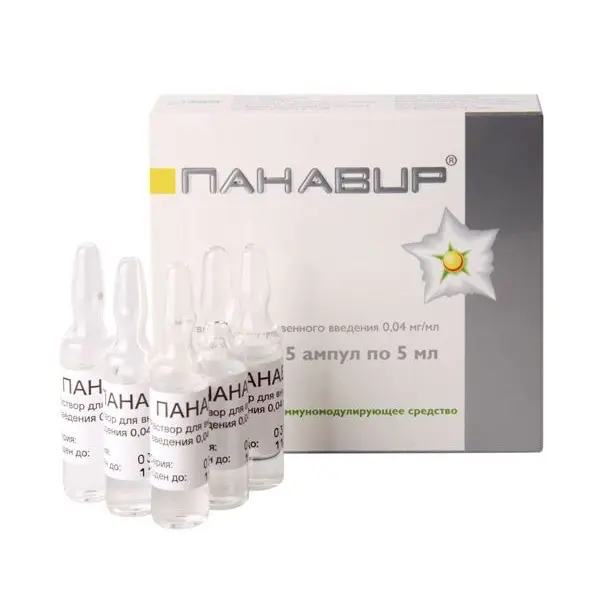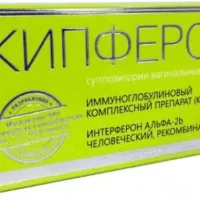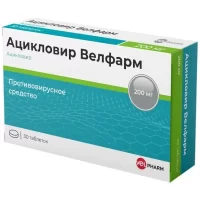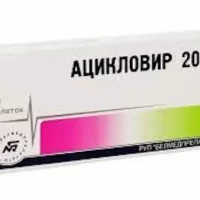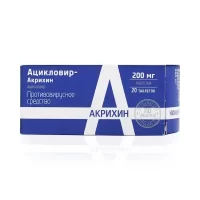Description
Panavir Pharmacodynamics
Panavir® is a purified extract of the shoots of the plant Solanum tuberosum; the main active ingredient is a hexose glycoside consisting of glucose, rhamnose, arabinose, mannose, xylose, galactose, uronic acids.
Panavir® is an antiviral and immunomodulatory agent. It increases nonspecific resistance to various infections and promotes induction of interferon alpha and gamma by blood leukocytes.
In therapeutic doses the drug is well tolerated.
Tests showed absence of mutagenic, teratogenic, carcinogenic, allergic and embryotoxic effects. Negative effects on reproductive function and fetal development were not found in preclinical studies on laboratory animals.
It has anti-inflammatory properties in experimental models of exudative edema, chronic proliferative inflammation and in a test of pseudoallergic inflammatory response to concanavalin A.
An analgesic effect in models of neurogenic pain and pain caused by inflammation and thermal irritation has been shown.
It has antipyretic effect.
Neuroprotective properties were shown in the model of parkinsonian syndrome caused by systemic administration of neurotoxin 1-methyl-4-phenyl-1,2,3,6-tetrahydropyridine.
It has the ability to improve functions of the retina and optic nerve.
It has wound-healing properties in a gastric ulcer model.
Indications
-Herpesviral infections of various localizations (including recurrent genital herpes, herpes zoster and ophthalmoherpes).
-Secondary immunodeficiencies against the background of infectious diseases.
-Cytomegalovirus infection, including in patients with habitual pregnancy failure. It is used in women with chronic viral infection and interferon deficiency at the stage of preparation for pregnancy.
-Papillomavirus infection (anogenital warts) as part of complex therapy.
-Gastric and duodenal ulcers in patients with long-term scarring ulcers and symptomatic gastroduodenal ulcers as part of the complex therapy.
-Tick-borne encephalitis in order to reduce the viral load and relieve neurological symptoms (anisoreflexia, reduction of reflexes, painfulness of the exit points of cranial nerves, nystagmus) as part of the complex therapy.
-Rheumatoid arthritis combined with herpesvirus infection in immunocompromised
Contraindications .
-Individual intolerance. Panavir® should not be used in patients who are allergic to the ingredients of the drug: glucose, mannose, rhamnose, arabinose, xylose.
-Period of lactation.
-Children under 12 years of age.
Dosage and administration
- Panavir® should be slowly administered intravenously.
- Therapeutic drug dose is 200 micrograms of active substance (the contents of one ampoule or vial).
- For treatment of herpesvirus infections and tick-borne encephalitis the drug is used twice at intervals of 48 or 24 hours. If necessary, the treatment course may be repeated after 1 month.
- For the treatment of cytomegalovirus and papillomavirus infections it is used three times during the first week at intervals of 48 hours and twice during the second week at intervals of 72 hours.
- For treatment of gastric and duodenal ulcer in acute phase and symptomatic gastroduodenal ulcers 5 intravenous injections are used every other day for 10 days.
- For treatment of rheumatoid arthritis combined with herpesvirus infection in immunocompromised patients, 5 intravenous injections with 24-48 h intervals are used; if necessary, the course is repeated after 2 months.
- For treatment of acute respiratory viral infections and influenza two intravenous injections are administered at intervals of 18-24 hours.
- For treatment of patients with chronic bacterial prostatitis 5 intravenous injections are used 48 hours apart.
- PEDIATRIC USE
- Panavir® is indicated in children from 12 years of age in a dose of 100 micrograms intravenously once a day.
- For treatment of herpesvirus infections and tick-borne encephalitis it is used twice with 48 or 24 hours intervals. If necessary, treatment can be repeated in 1 month.
- For treatment of cytomegalovirus and papillomavirus infections it is used three times during the first week at intervals of 48 hours and twice during the second week at intervals of 72 hours.

